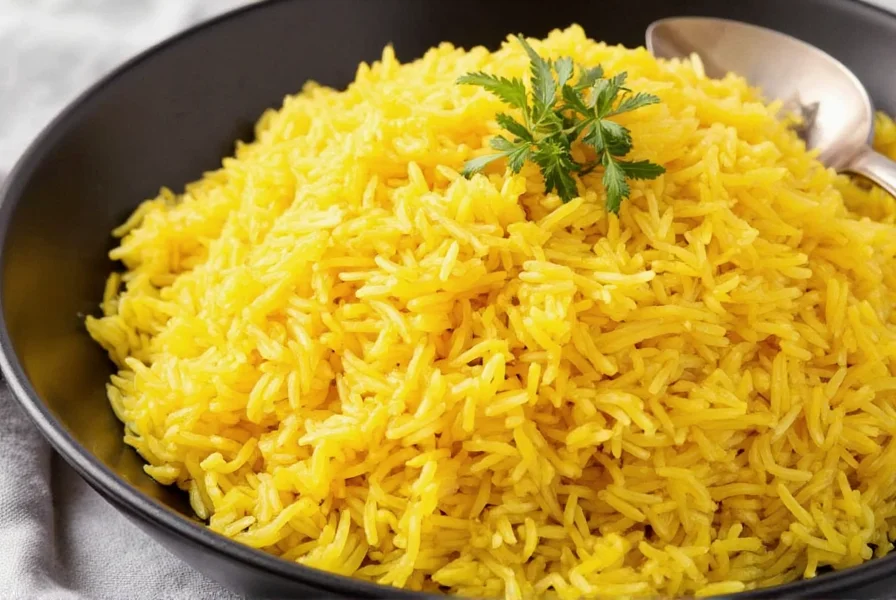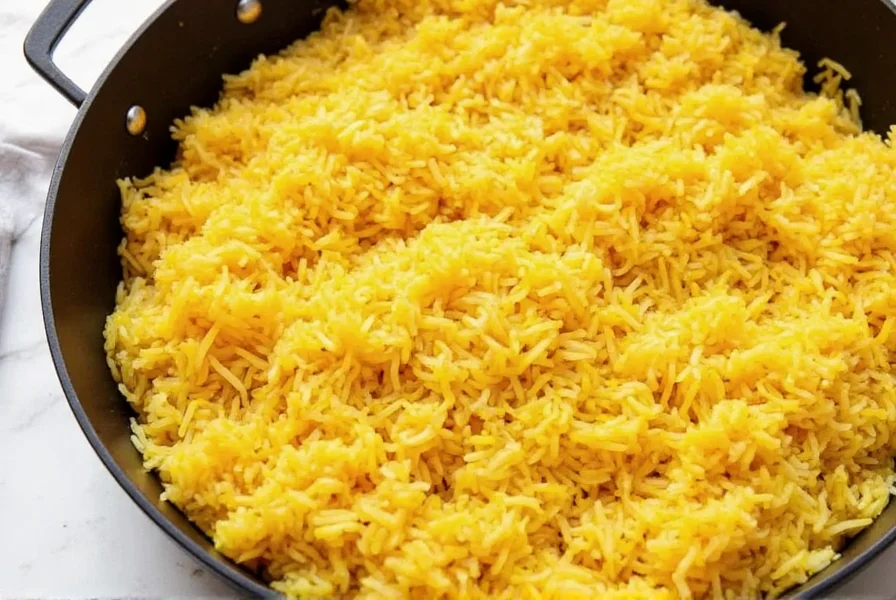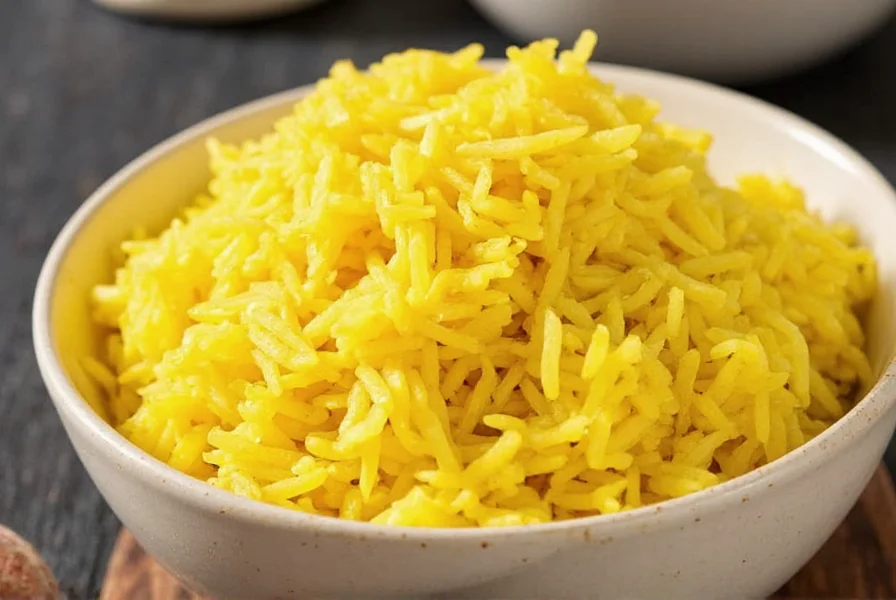The quickest way to make perfect saffron rice: Rinse 1½ cups basmati rice until water runs clear. Soak in cold water for 30 minutes. Steep ½ teaspoon saffron threads in 2 tablespoons warm water for 15 minutes. Sauté rice in 1 tablespoon butter for 2 minutes. Add 2 cups water, saffron liquid, ½ teaspoon salt, and bring to boil. Reduce heat to low, cover, and simmer for 15 minutes. Remove from heat and let rest 10 minutes before fluffing with fork.
The Art of Crafting Perfect Saffron Rice
Saffron rice transforms ordinary meals into extraordinary dining experiences. This golden-hued dish, prized for centuries across Persian, Spanish, and Indian cuisines, requires careful technique to achieve its signature aroma and vibrant color. Unlike ordinary rice dishes, saffron rice demands attention to detail—particularly in how you prepare the world's most expensive spice. Many home cooks make the critical error of adding saffron directly to rice without proper blooming, resulting in uneven color distribution and wasted precious threads.
Why Saffron Requires Special Treatment
Saffron's magic lies in crocin, the compound responsible for its distinctive golden hue, and safranal, which provides its unique aroma. These compounds are water-soluble but won't properly release when added directly to dry rice. Proper blooming in warm liquid unlocks saffron's full potential, ensuring even color distribution and maximum flavor extraction. This fundamental technique separates authentic saffron rice from inferior versions that merely use turmeric for color—a common shortcut that produces visually similar but flavorless results.
Essential Ingredients for Authentic Saffron Rice
Quality ingredients form the foundation of exceptional saffron rice. Don't compromise on these key components:
| Ingredient | Quantity | Preparation Notes |
|---|---|---|
| Basmati rice | 1½ cups | Rinse until water runs clear; soak 30 minutes |
| Saffron threads | ½ teaspoon (about 30 threads) | Must be pure saffron, not powder |
| Water or broth | 2 tablespoons for blooming + 2 cups for cooking | Warm liquid for blooming |
| Salted butter | 1 tablespoon | Unsalted works with additional ¼ tsp salt |
| Salt | ½ teaspoon | Adjust to taste after cooking |
Equipment Checklist for Success
While you can make saffron rice with basic kitchen tools, these items significantly improve results:
- Heavy-bottomed pot with tight-fitting lid (3-quart capacity)
- Fine mesh strainer for rinsing rice
- Small mortar and pestle (optional but recommended for grinding saffron)
- Non-reactive bowl for blooming saffron
- Wooden spoon or rice paddle
Step-by-Step Saffron Rice Preparation
1. Bloom the Saffron Properly
Place saffron threads in a small mortar and gently crush to increase surface area. Transfer to a non-reactive bowl and add 2 tablespoons warm water (not boiling). Cover and let steep for 15-20 minutes. This critical step extracts maximum color and flavor—never skip it when learning how to make saffron rice without turmeric.

2. Prepare the Rice
Rinse basmati rice under cold water until the water runs clear—this removes excess starch that causes stickiness. Soak the rinsed rice in cold water for 30 minutes, then drain thoroughly. Properly prepared rice grains should remain distinct and fluffy after cooking.
3. Sauté and Simmer
Melt butter in your heavy-bottomed pot over medium heat. Add drained rice and sauté for 2 minutes, stirring gently to coat each grain. Pour in bloomed saffron (including threads), 2 cups water, and salt. Bring to a boil, then immediately reduce heat to the lowest setting.
4. Steam to Perfection
Cover tightly with lid and cook for 15 minutes without lifting the lid. The trapped steam completes the cooking process. After 15 minutes, remove from heat but keep covered for 10 additional minutes—this resting period allows residual steam to finish cooking the rice without overcooking the bottom layer.
5. Fluff and Serve
Using a fork, gently fluff the rice from bottom to top to distribute saffron evenly. Serve immediately for best texture. For restaurant-quality presentation, mound rice in a warmed serving dish with a small well in the center filled with additional saffron threads.

Avoid These Common Saffron Rice Mistakes
Even experienced cooks make these critical errors when attempting authentic saffron rice preparation:
- Adding saffron directly to dry rice—results in uneven color and wasted threads
- Using boiling water for blooming—can degrade delicate flavor compounds
- Stirring during cooking—breaks rice grains and creates mushiness
- Lifting the lid while cooking—releases essential steam needed for proper cooking
- Skipping the resting period—leads to undercooked bottom layer and overcooked top
Serving Suggestions and Variations
Traditional Persian saffron rice (Tahdig) features a coveted crispy bottom layer. To achieve this, increase cooking time by 5 minutes after the initial 15-minute simmer, then carefully invert onto a serving platter. For Spanish paella-style saffron rice, substitute ½ cup of water with chicken broth and add 1 minced garlic clove during the sauté step.
Pair saffron rice with grilled meats, roasted vegetables, or as part of a biryani. The subtle floral notes complement rich flavors without overpowering them. For a complete meal, serve alongside cucumber-yogurt raita and roasted vegetables.
Storage and Reheating Guidelines
Store leftovers in an airtight container in the refrigerator for up to 3 days. To reheat without drying out the delicate grains:
- Add 1-2 tablespoons water per cup of rice
- Cover tightly with damp paper towel
- Microwave at 50% power for 1-2 minutes
- Fluff gently before serving
Freezing saffron rice is not recommended as it damages the delicate texture of the grains.
FAQ: Saffron Rice Questions Answered
Can I substitute turmeric for saffron in rice?
While turmeric provides similar yellow color, it lacks saffron's distinctive floral aroma and honey-like flavor notes. Turmeric creates a completely different dish that cannot replicate authentic saffron rice. For true how to make saffron rice perfectly results, use genuine saffron threads.
Why is my saffron rice sticky?
Sticky saffron rice typically results from insufficient rinsing of the rice grains or stirring during cooking. Basmati rice contains surface starch that must be thoroughly rinsed away. Never stir rice while it's cooking, as this releases more starch and creates a gummy texture. Properly prepared saffron rice should feature distinct, separate grains.
How can I maximize saffron's color and flavor?
For maximum color extraction, gently crush saffron threads with a mortar and pestle before blooming. Use warm (not boiling) liquid and allow at least 15-20 minutes for steeping. Adding a pinch of sugar to the blooming liquid can enhance color release. Never add saffron directly to dry rice—this wastes up to 70% of its coloring potential.
What's the difference between saffron rice and turmeric rice?
Saffron rice features a delicate floral aroma and subtle honey notes with vibrant golden color, while turmeric rice has an earthy, slightly bitter flavor with a more intense yellow hue. Saffron rice represents a premium culinary experience requiring proper technique, whereas turmeric rice is a simpler, more economical alternative. Understanding this distinction is essential when following an authentic saffron rice recipe.
How much saffron should I use for rice?
For 1½ cups of uncooked rice, use ½ teaspoon of saffron threads (approximately 30 threads). This provides optimal color and flavor without overwhelming the dish. Using less than ¼ teaspoon won't produce noticeable results, while exceeding 1 teaspoon creates overpowering bitterness. Remember that proper blooming technique matters more than quantity when learning the best way to make saffron rice.











 浙公网安备
33010002000092号
浙公网安备
33010002000092号 浙B2-20120091-4
浙B2-20120091-4